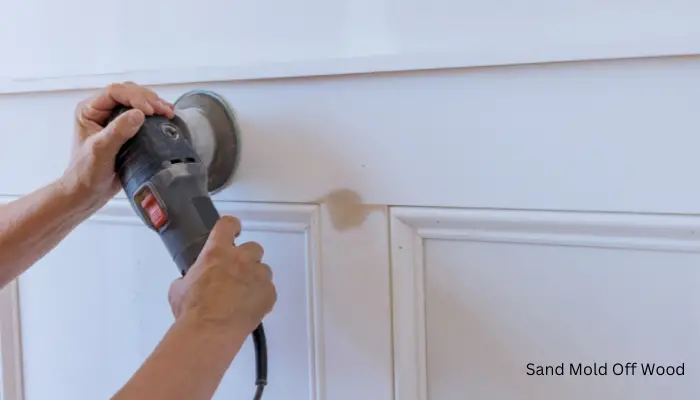How to Sand Mold Off Wood: A Step-by-Step Guide
Mold is a common problem that can affect wood furniture, flooring, and other surfaces. Mold grows on organic materials that are moist or decaying, and it can cause health issues and damage the wood. If you notice mold on your wood, you need to act quickly and remove it safely. One of the most effective ways to do that is by sanding it off. In this blog post, we will show you how to sand mold off wood in five easy steps.
Step 1: Prepare Your Work Area
Before beginning the process of removing mold from wood, make sure you have a well-ventilated work area that is free of dust and debris. If possible, take the mold-infested wood outside when cleaning to prevent spreading spores indoors. If you must remain indoors, close doors or use plastic sheeting to shield other areas. You should also wear protective clothing and equipment, such as a long-sleeved shirt, pants, rubber gloves, safety goggles, and an air mask.
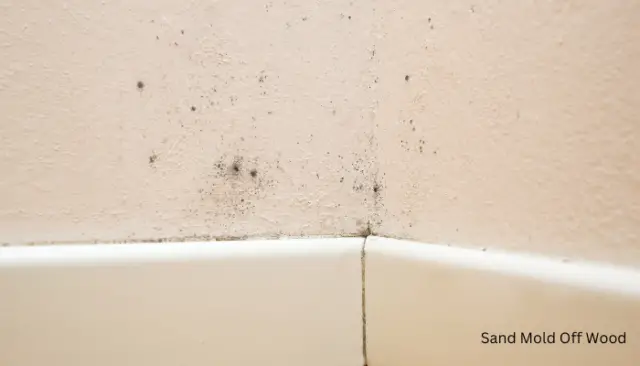
Step 2: Gather the Necessary Tools
Next, you’ll need to gather the necessary tools for sanding mold off the wood. You will need:
- A vacuum with a HEPA filter
- Coarse and fine-grit sandpaper (between 100 and 220 grit)
- A soft-bristled scrub brush
- A sponge
- Dishwashing detergent
- Water
- Distilled white vinegar
- A spray bottle
- A soft cloth
- Wood finish (optional)
Step 3: Begin Sanding
Start by vacuuming the affected area of wood to remove any loose mold spores and dirt. Then, use coarse sandpaper to remove the bulk of the mold and the stained layers of wood. Work the sandpaper slowly and gently around the area until you see no visible signs of mold. You may need to change the sandpaper frequently as it gets clogged with mold. After you have removed the mold with coarse sandpaper, switch to finer grits for a smooth finish.
Step 4: Clean the Area Thoroughly
Once you have sanded the mold off the wood, you need to clean the area thoroughly to remove any remaining spores and residues. Mix some dishwashing detergent and water in a bucket, and use a sponge to wipe down the wood. Then, spray some distilled white vinegar on the wood and let it sit for a few minutes. Vinegar is a natural disinfectant that can kill mold and prevent it from regrowing. Finally, wipe the wood dry with a soft cloth.
Step 5: Apply Wood Finish
The last step is to apply a wood finish to the sanded area to restore its appearance and protect the wood from future mold growth. You can use any type of wood finish that suits your preference, such as stain, sealer, or paint. Follow the manufacturer’s instructions and apply the finish evenly with a brush or a cloth. Let the finish dry completely before using the wood.
Other Ways to Remove Mold from Wood?
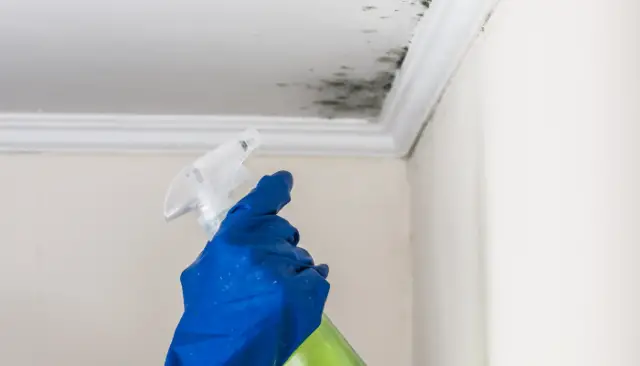
There are several methods to remove mold from wood, depending on the severity and type of the mold. Some of the common methods are:
- Use dishwashing soap and warm water to scrub off light mold.
- Use cheap vodka or distilled white vinegar to spray and kill mold spores.
- Use a bleach solution to wipe off stubborn mold.
- Sand the moldy area until the wood is smooth and clean.
You should always wear protective gear and work in a well-ventilated area when dealing with mold. You may also need to apply a wood finish after removing the mold to restore and protect the wood
The Best Way to Prevent Mold Growth on Wood?
There are several ways to prevent mold growth on wood, such as:
- Keeping the wood dry and well-ventilated.
- Applying a mold-resistant finish or sealant to the wood.
- Using a dehumidifier or fan to reduce humidity levels in the area.
- Cleaning the wood regularly with a mild detergent and water solution.
- Use a fungicide or vinegar spray to kill any mold spores on the wood.
Some Common Types of Mold That Grow on Wood?
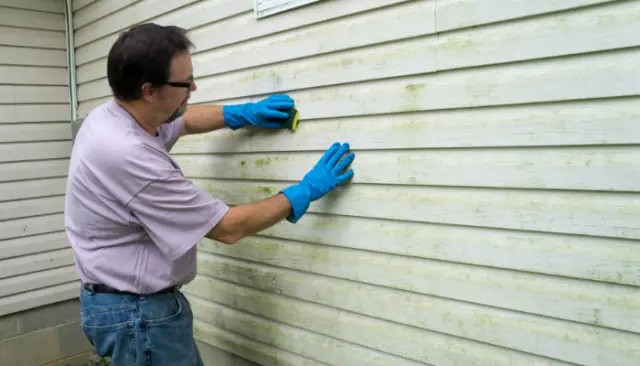
Some common types of mold that grow on wood are:
- Chaetomium: This is an allergenic mold that often grows in water-damaged homes. It starts as a fuzzy white growth and then darkens to pink or brown.
- Stachybotrys: This is a toxigenic mold that is also known as black mold. It thrives in damp areas and can cause health problems. It has a greenish-black color and a slimy texture.
- Trichoderma: This is another toxigenic mold that is found in soils and can grow on wood. It has a white or green color and a wooly texture. It can produce toxins that damage the wood and other materials.
- Aureobasidium: This is an allergenic mold that prefers to live on wood. It has a pink or brown color that darkens with age. It can cause allergic reactions and infections.
- Serpula lacrymans: This is a mold that causes dry rot in wood. It feeds solely on wooden surfaces and has a yellow color. It can weaken the wood and make it crumble.
These are some of the most common types of mold that grow on wood, but there are many others. If you suspect you have mold on your wood, you should inspect it carefully and remove it safely. You can also prevent mold growth by keeping the wood dry, well-ventilated, and clean. I hope this helps you with your question. If you have any more questions, feel free to ask me.
How Do You Tell if Wood Has Mold?
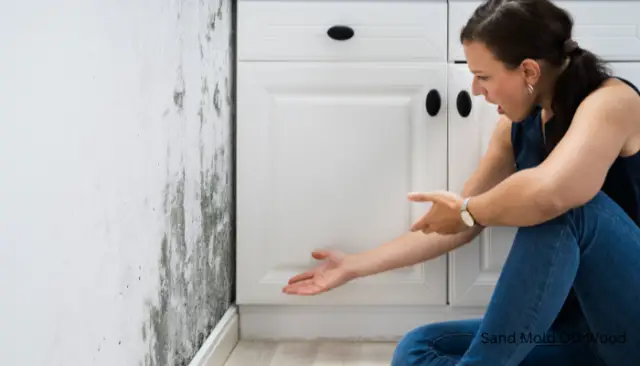
There are several ways to tell if your wood has mold, such as:
- Looking for visible signs of discoloration, staining, or patches of different colors on the wood. Mold can be grey, black, green, white, pink, red, brown, or yellow.
- Smelling for a musty, earthy, or sour odor that indicates mold growth. Mold produces a distinctive smell as it feeds on organic materials.
- Testing for mold with a bleach solution. If you apply a drop of bleach to a suspected mold spot and it lightens in color, it is likely mold.
- Get professional mold testing if you are unsure or concerned about the type and extent of mold in your home. A mold inspector can take samples and analyze them in a laboratory to identify the mold species and recommend the best course of action.
Common Causes of Mold Growth on Wood?
Some common causes of mold growth on wood are:
- Excess moisture from leaks, high humidity, or improper drainage.
- Poor air circulation traps moisture in the air.
- Untreated or unprotected wood is more susceptible to decay.
- Direct contact with soil that contains mold spores.
- Aging wood that becomes more porous and prone to rot.
You can prevent mold growth on wood by keeping it dry, well-ventilated, and clean. You can also apply a mold-resistant finish or sealant to the wood to protect it from moisture and spores.
How Long Does It Take for Mold to Grow on Wood?
According to one source, mold growths, or colonies, can start to grow on a damp surface within 24 to 48 hours. However, other factors, such as the type of mold, the temperature, and the humidity level, can affect the growth rate of mold. Therefore, it is important to prevent and remove mold as soon as possible to avoid health problems and damage to the wood. I hope this answers your question.
Conclusion
Sanding mold off wood is a simple and effective way to remove mold and restore the wood’s beauty. By following these five steps, you can sand mold off wood safely and easily. However, if the mold has spread over a large area or penetrated deep into the wood, you may need to hire a professional mold removal service to handle the job. Remember to always wear protective gear and work in a well-ventilated area when dealing with mold. We hope this blog post has been helpful and informative. If you have any questions or comments, please feel free to leave them below. Thank you for reading.
Frequently Asked Questions About the Topic of Sanding Mold off Wood:
Q: What are the health risks of mold exposure?
- Mold exposure can cause allergic reactions, respiratory problems, skin irritation, eye irritation, headaches, and other symptoms. Some molds can also produce toxins that can affect the nervous system, immune system, and liver.
Q: How can I tell if the mold on my wood is toxic or not?
- A: There is no definitive way to tell if the mold on your wood is toxic or not by its appearance or smell. The only way to know for sure is to get professional mold testing and analysis. However, you should treat any mold as potentially harmful and remove it safely.
Q: What are the best types of sandpaper to use for sanding mold off wood?
- A: The best types of sandpaper to use for sanding mold off wood depend on the condition and type of the wood. Generally, you should start with coarse sandpaper (between 100 and 150 grit) to remove the bulk of the mold and the stained layers of wood. Then, you should switch to finer sandpaper (between 180 and 220 grit) to smooth the surface and remove any remaining mold. You may need to use different sandpaper for different areas of the wood.
Q: How do I dispose of the moldy sandpaper and wood dust?
- A: You should dispose of the moldy sandpaper and wood dust carefully to avoid spreading spores and contaminating other areas. You should seal the sandpaper and wood dust in plastic bags and throw them away in an outdoor trash can. You should also vacuum the work area with a HEPA filter and wipe it down with a damp cloth.
Q: Can I use a power sander or a drill attachment to sand mold off wood?
- You can use a power sander or a drill attachment to sand and mold off wood, but you should be careful not to damage the wood or create too much dust. You should also wear a dust mask and goggles to protect yourself from inhaling or getting spores in your eyes. You should also use a vacuum attachment to collect the dust as you sand.
Q: How do I prevent the wood from warping or cracking after sanding?
- A: You can prevent the wood from warping or cracking after sanding by letting it dry completely before applying any finish or sealant. You should also avoid exposing the wood to extreme temperatures or humidity levels. You should also store the wood in a dry and well-ventilated place.
Q: How do I choose the best wood finish or sealant for the sanded wood?
- A: You can choose the best wood finish or sealant for the sanded wood based on your preference and the type of wood. You can use stain, sealer, paint, varnish, lacquer, oil, wax, or any other product that suits your needs. You should follow the manufacturer’s instructions and apply the finish or sealant evenly with a brush or a cloth. You should also choose a product that is mold-resistant or contains a fungicide to prevent future mold growth.
Q: How often should I inspect and clean the wood to prevent mold growth?
- A: You should inspect and clean the wood regularly to prevent mold growth. You should look for any signs of moisture, discoloration, or odor that indicate mold growth. You should also clean the wood with a mild detergent and water solution and dry it thoroughly. You should also reapply the finish or sealant as needed to maintain the protection.
Q: What should I do if the mold has spread over a large area or penetrated deep into the wood?
- If the mold has spread over a large area or penetrated deep into the wood, you may need to hire a professional mold removal service to handle the job. A professional mold removal service can assess the extent of the damage, use specialized equipment and techniques to remove the mold, and restore the wood to its original condition. You should also consult a doctor if you have any health concerns related to mold exposure.
Q: Where can I find more information and resources on sanding mold off wood?
- A: You can find more information and resources on sanding mold off wood from various sources, such as:
- The U.S. Environmental Protection Agency (EPA) website provides guidelines and tips on mold prevention and cleanup.
- The Centers for Disease Control and Prevention (CDC) website provides information and advice on mold and health.
- The Wood Database website provides information and properties about different types of wood.
- The Family Handyman website provides DIY projects and tips on woodwork and home improvement.
- The Bob Vila website provides expert advice and inspiration on home renovation and repair.

